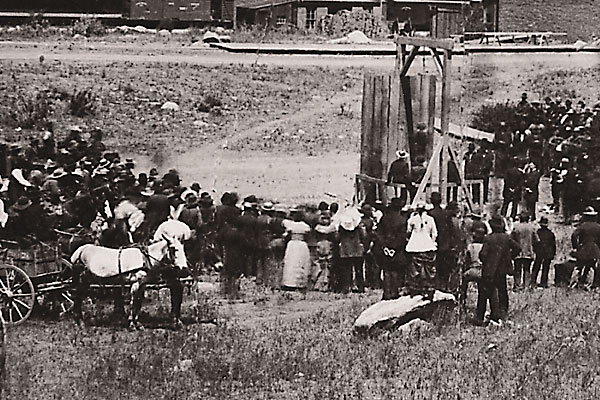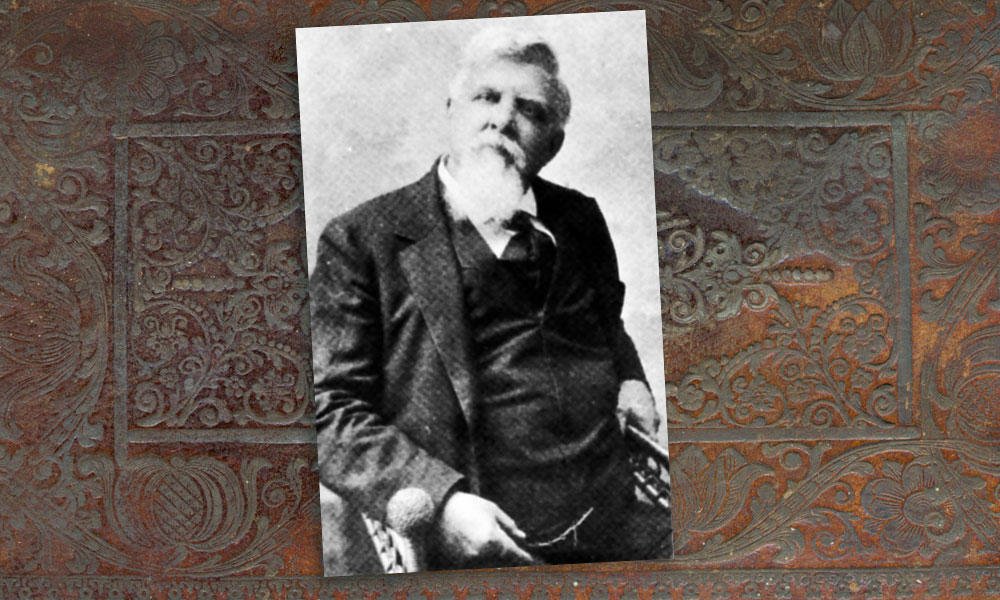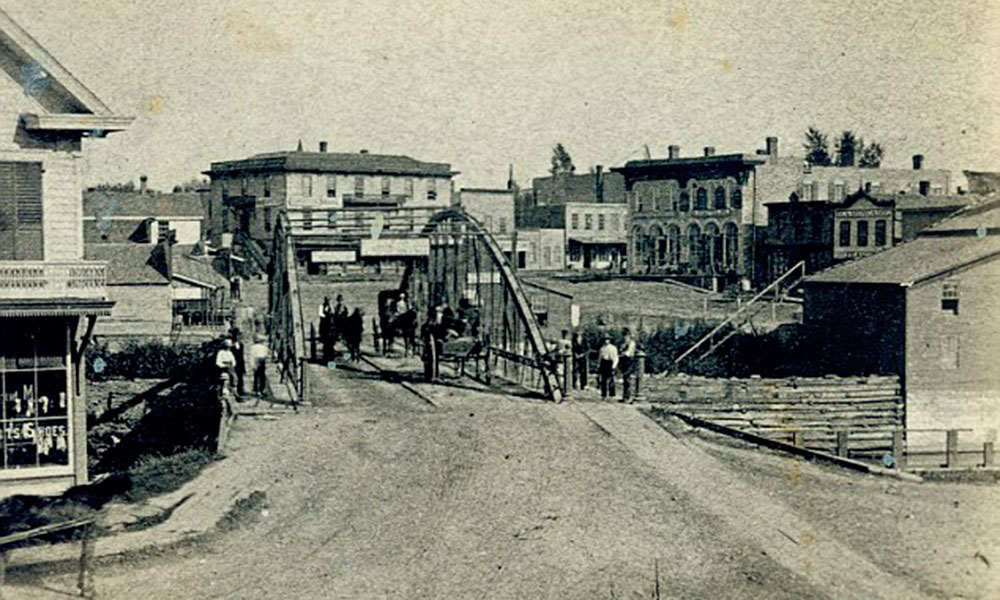
Thanks to an inquiry from my electrician friend Rob Brown of Montrose, Colorado, I am treating you to a medical discussion of Old West hangings.
Hangings in Western movies are about as common as whiskey drinking. To see the act portrayed in a medically accurate manner, however, is uncommon.
Consider the depictions in the 1968 movie Hang ’Em High with Clint Eastwood (Marshal Jed Cooper), Ben Johnson (Marshal Dave Bliss) and Pat Hingle (Judge Adam Fenton). Marshal Bliss finds Cooper lynched by some angry ranchers. He was suspended from a tree by a rope for an indeterminate amount of time, perhaps many minutes or up to an hour or more. Revived from near strangulation, Cooper, later in the movie and by then a U.S. marshal, fills the “more civilized” gallows of Judge Fenton with criminals who are hanged six at a time, in a seemingly better-engineered manner.
How about the scene in 1959’s Ride Lonesome, in which Randolph Scott (bounty hunter Ben Brigade) shoots the rope suspending James Best (Brigade’s quarry Billy John) who had been hanged from a tree, after sitting on a horse? Billy John remained above ground, hanging by his neck for 10 seconds (I timed it), before falling back to earth unharmed.
Perhaps you remember the scene from 1967’s The Way West, in which Kirk Douglas (Sen. William J. Tadlock) drove his buggy to “pulley-up” and execute Michael Witney (Johnnie Mack) who had accidentally shot the son of Michael Lane (Sioux chief).
From Reel to Real
Historically, executioners used four methods for hanging a human being.
The first method was the “Short Drop,” in which the victim hanged by the neck after dropping from the back of a cart, horse or even off a ladder. This victim usually suffered a slow and painful death by strangulation and asphyxiation, unless rescued in time (as were Clint Eastwood and James Best’s characters).
“Suspension Hanging” (how Witney is executed in The Way West) involved hoisting the victim up by a pulley or pulling the rope over the limb of a tree. Many died like they would have via the “Short Drop,” unless the hanging was conducted by using heavy weights that hoisted the victim with such force that his neck broke.
The “Standard Drop” (Hingle’s method in Hang ’Em High) was a common form of official execution, performed from the mid-1800s until the early 20th century. This form of hanging usually involved dropping the victim about four to six feet from a gallows through a trapdoor with the intention of breaking his neck. The well-oiled “hangman’s noose” was wrapped upon itself at least nine times, in case the victim had the luck of a cat.
For the fourth type, the “Long Drop,” introduced in 1872, I am proposing a new name, the “Botched Drop.” Take the case of Thomas “Black Jack” Ketchum, who was hanged in Clayton, New Mexico, for train robbery on April 26, 1901. Black Jack’s executioner gave him too much rope, causing too long a drop. Like Newton’s apple, while heading for the ground, Black Jack achieved too much velocity before his neck snapped, causing his head to separate from his body for a gruesome ending. A similar miscalculation beheaded poor Eva Dugan in Florence, Arizona, on February 21, 1930. “Eva’s exit” prompted the state of Arizona to abandon hanging in favor of lethal gassing—another pretty sight to see.
The objectives of hangings are to cause: the breaking of the neck, rapid onset of unconsciousness and the cessation of breathing, leading to death. The well-executed victim will usually struggle and kick, involuntarily lose his urine and feces and turn a shade of blue. Interestingly, male victims sometimes develop an erection and ejaculate. The heart may continue to beat for as long as 15 minutes. Legal death is not pronounced until heart activity ceases. For this reason, in formal British executions, the victim remained hanging for one hour.
Quackery
For good reason, Hollywood receives a “Medical C–” for its inaccurate depictions of this often cruel ending to the “Good, the Bad and the Unlucky.” We see a lot of wiggling but not much more. Among the hanging depictions mentioned, Randolph Scott’s rescue of Billy John receives a “Medical A–.” Boy, am I an easy grader!






